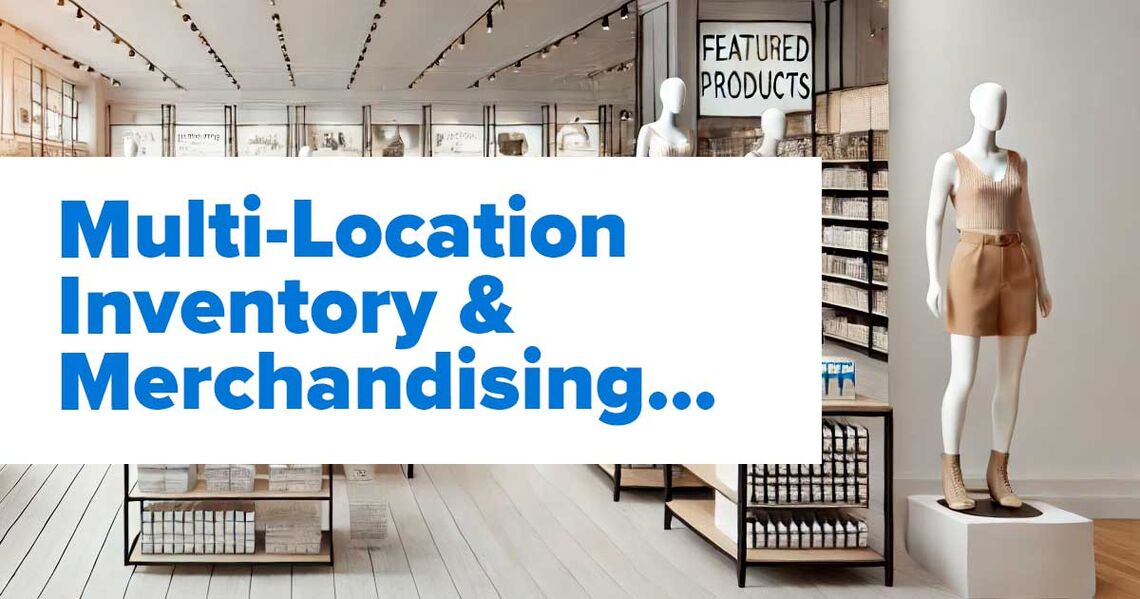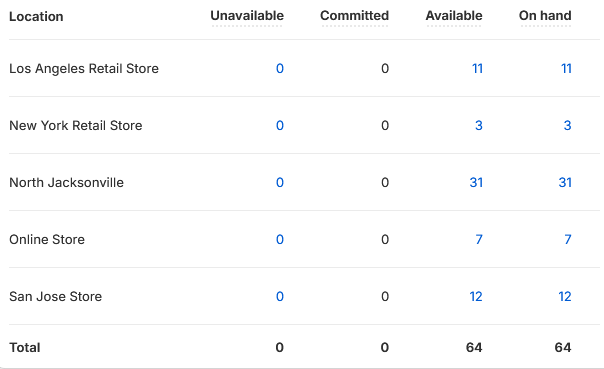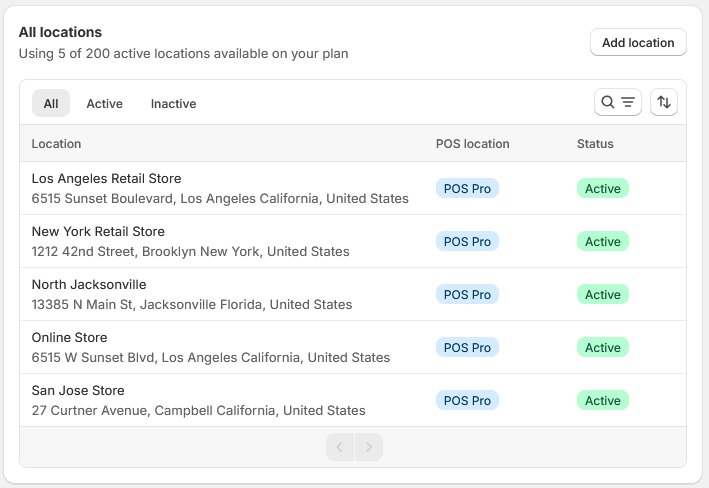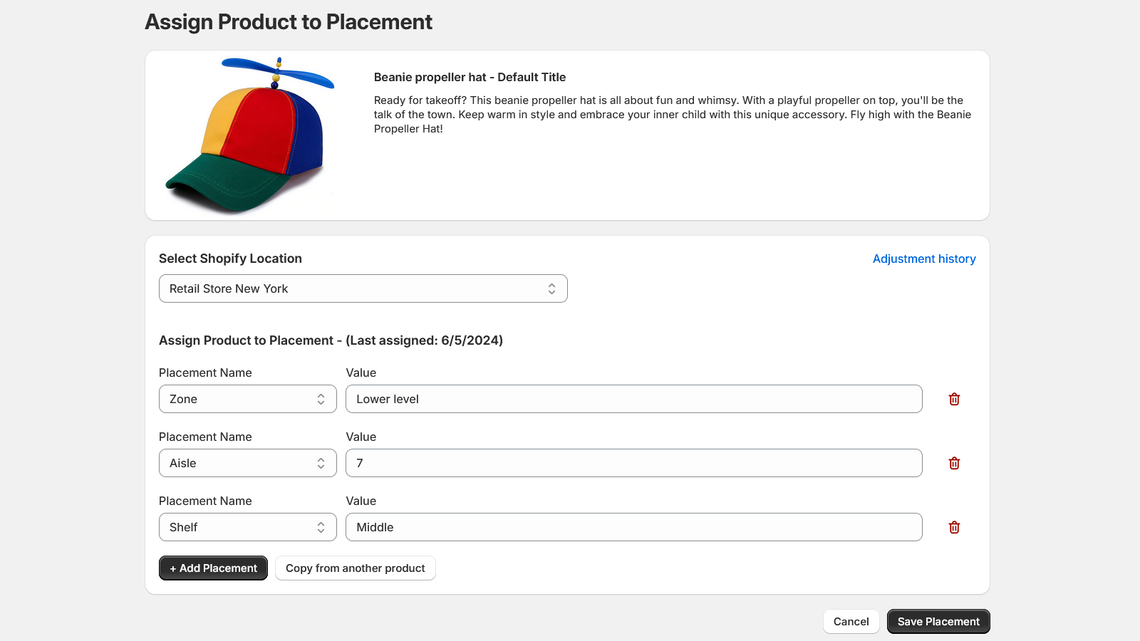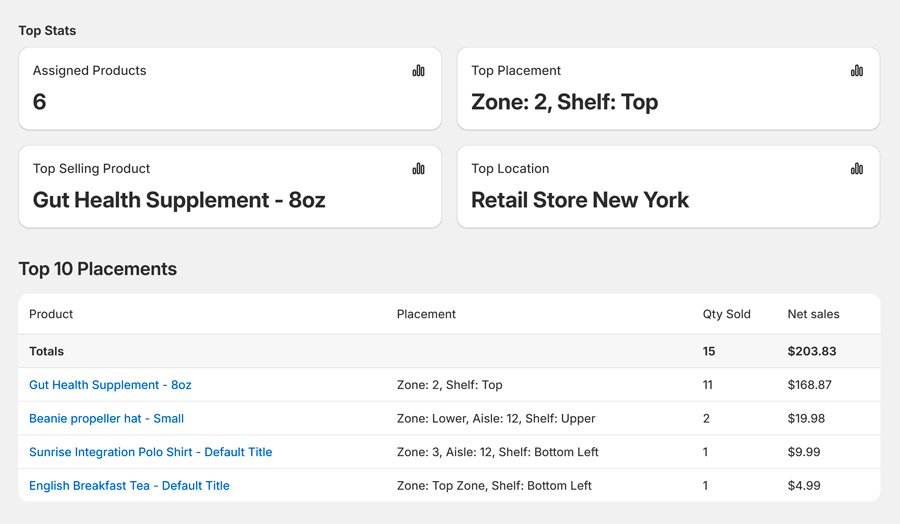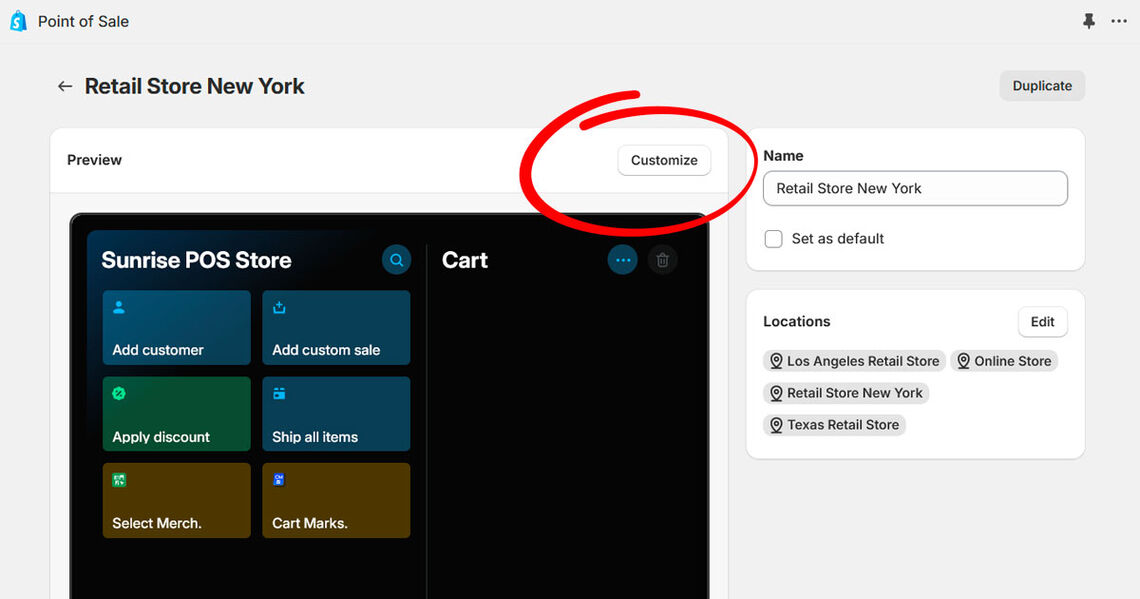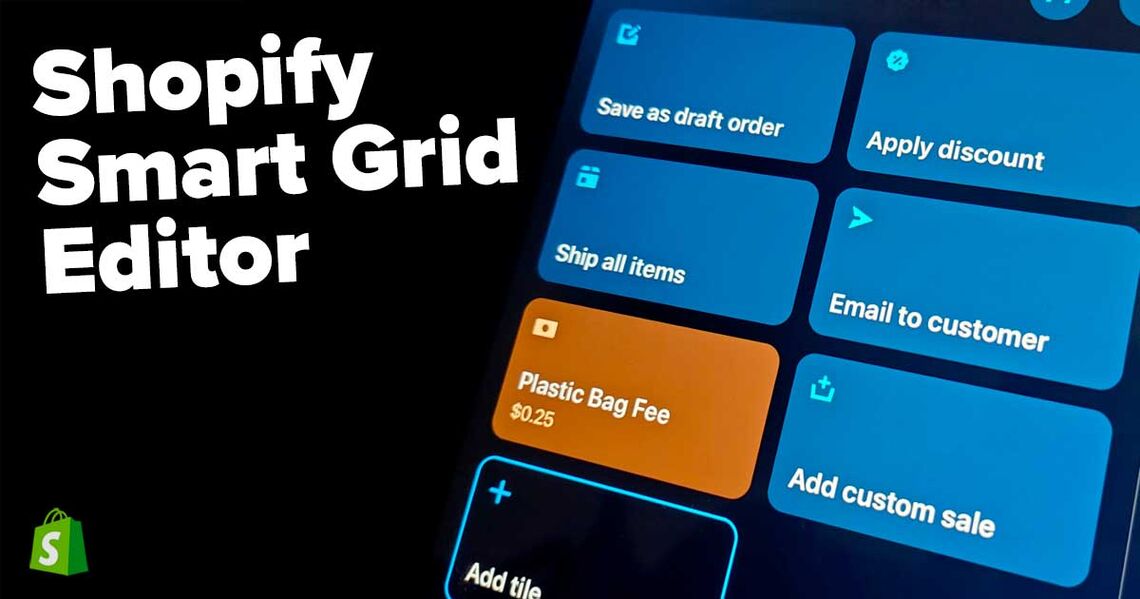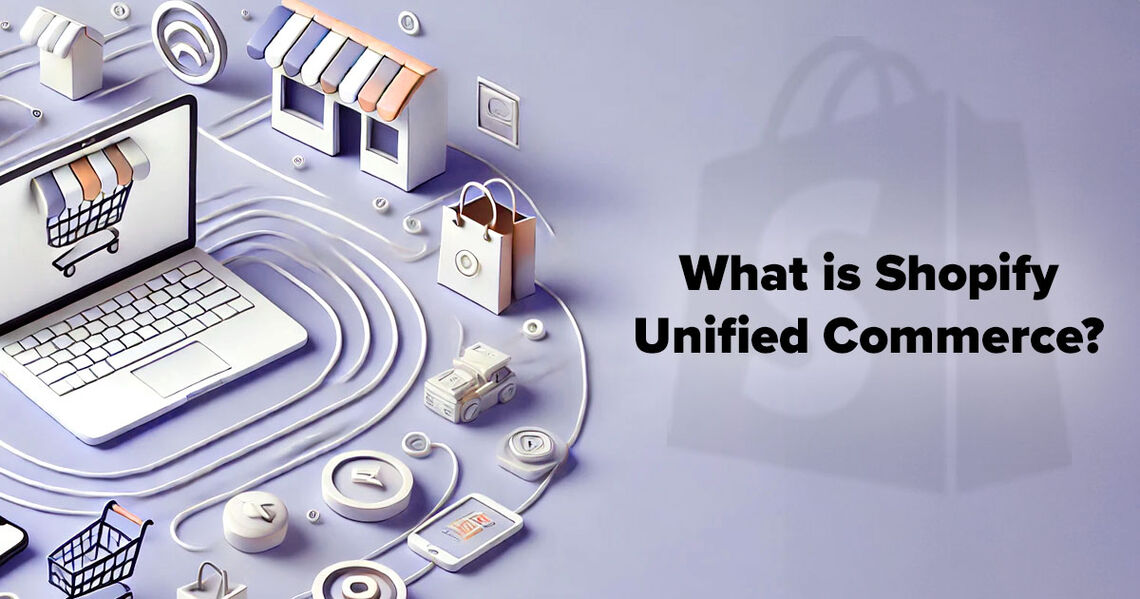Using Shopify, you can assign inventory to separate locations and see a real time snapshot of your inventory. All your products and variants can support multiple stock counts for each location. Shopify will keep track of available, committed and on-hand inventory levels. You can see the complete, real time picture for any item.
This is especially helpful since most retailers tend to employ a “just-in-time” product strategy. This means you’re only ordering and receiving inventory to meet customer demand, no more, no less. To pull this off, you need to know your exact inventory levels at any given moment of the business day. When you have a unified inventory solution, ordering and transferring stock becomes much easier since you're not guessing at current quantity levels.
Organize Your Retail Stores
Shopify lets you configure multiple locations within your administration, including POS locations. Shopify Plus gives you as many as 1000 retail locations within your control. All of these locations are managed from the unified Shopify admin. You can now view and assign inventory to any of these locations. To start, you simply add the details for each of your retail and online locations. You can decide which location will hold and ship products.
